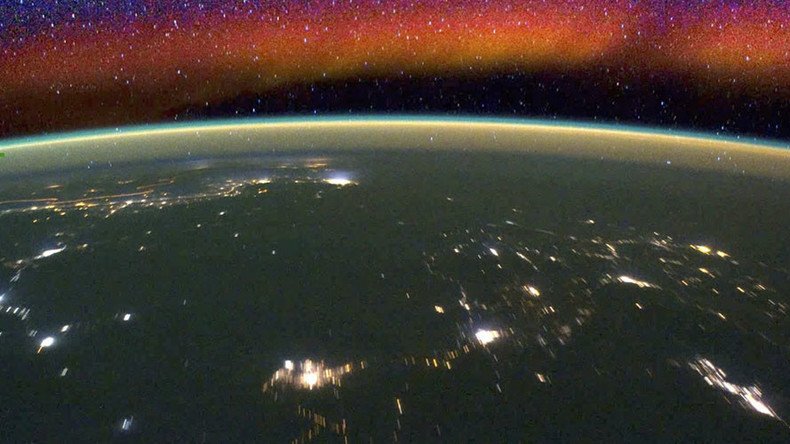Spectacular ‘airglow’ timelapse as NASA prepares for weather mission to ‘no man’s land’ (VIDEO)

Crew on board the International Space Station (ISS) have captured images of the stunning colors swirling above the earth, the result of the upper atmosphere mixing with weather below.
In a NASA timelapse video, large color bands of red and rust can be seen floating about 480km (300 miles) above the surface of the Earth.
NASA will use its Ionospheric Connection Explorer (ICON) next year to better understand the conditions causing the colorful light show, known as airglow.
Video of the airglow shows the amazing phenomenon amid thunderstorms, auroras and the illuminated cities of the world.
The ICON satellite, due to launch in June 2017, will study the interaction between gases and charged particles floating in this boundary between Earth and space.
NASA will explore the different atmospheric layers within the ionosphere for “complex interaction” between terrestrial weather and Earth’s magnetic field particles.
Watch supercool Earth's airglow time-lapse. The interactions between terrestrial weather and the ionosphere create...
Posted by RT Play on Wednesday, April 6, 2016
Disturbances in the 96-960km (60-600 mile) region above our blue planet can have dire consequences for communication systems such as radio and GPS.
READ MORE: NASA’s asteroid hunter discovers 72 near-Earth objects in two years (VIDEO)
A team from the University of California at Berkeley will lead the exploratory mission, analyzing changes in the lower troposphere, stratosphere, mesosphere and thermosphere.
“In the ‘no man’s land’ of the ionosphere, a continuous struggle between solar forcing and earth’s weather systems drive extreme and unpredicted variability,” the Berkeley university ICON mission page explains.
“ICON will investigate the forces at play in the near-space environment.”












